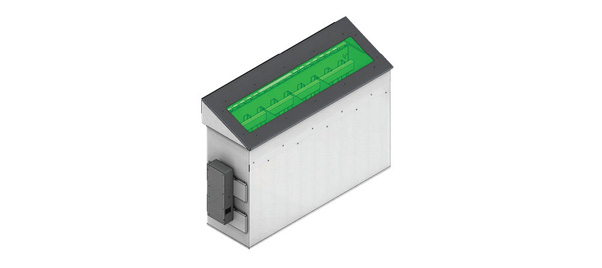Single-phase Immersion Cooling with GRC
First-rate Cooling in Data Centers
GIGABYTE has partnered with GRC (Green Revolution Cooling) to offer a Single-Phase Liquid Immersion Cooling solution that delivers optimal system performance, hardware reliability, and high efficiency. By deploying this cooling solution customers can expect rapid ROI. As less energy is needed, TCO is reduced as well, helping data centers unlock greater value in the utilization of resources for HPC and AI workloads.
Air Cooling Falls Short
Immersion cooling with GRC and GIGABYTE

| ICE Line of Products | ||
|---|---|---|
 ICEraQ
ICEraQ
|
 ICEtank
ICEtank
|
|
| Racks | 1 x 24U to 4 x 42U | 4 x 42U to 8 x 42U |
| Deployment | Data Center | Container |
| Cooling Capacity | 25-368kW | 184-368kW |
| Applications | HPC, AI, Private/Cloud, Edge, Geosciences, and High Frequency Trading | |
| Hash Line of Products | ||
|---|---|---|
 HashTank
HashTank
|
 HashRaQ
HashRaQ
|
|
| # of Racks | 1 or 2 | 2 x 52U or 6 x 52U |
| Deployed | Data Center | Container |
| Cooling Capacity | 200kW | 200kW |
| Applications | Bitcoin Mining or Blockchain Computing | |
Coolant - GRC ElectroSafe®
| Physical & Chemical Properties | GRC ElectroSafe |
|---|---|
| Fluid Type | Synthetic (hydrocarbon based) |
| Chemical State | Inert liquid |
| Health Concerns | Safe to breathe |
| Evaporation Rate | Nil |
| Percent Volatile | Nil (NFPA 701 rating: 0-1-0) |
| Auto-Ignition Temperature | > 343°C (650°F) |
| Density | 7.10-7.13 lbs/gal |
| Specific Gravity | 0.80-0.88 |
| Lifespan of coolant | 15+ years |
Liquids, when compared to air, have a much higher thermal capacity and excel at transferring heat. The direct contact between components and liquid facilitate fast heat transfer. GRC liquid immersion cooling systems utilize ElectroSafe coolants. ElectroSafe fluids represent a broad spectrum of high-performance, Earth-friendly, synthetic coolants that have undergone a meticulous selection and testing process. These coolants are dielectric, which is an absolute necessity, and can withstand the heat without degradation. They will outlast the components and are eco-friendly, non-toxic, odorless, non-evaporative, and electrically non-conductive. ElectroSafe fluids are globally available and have been deployed with GRC immersion cooling systems in 20 countries around the world, ensuring maximum performance, reliability and compatibility with virtually every GIGABYTE server and IT component available.
How GIGABYTE Servers Excel in GRC Tanks
-
Reduce Costs
Fanless server designs deliver 10-20% lower power draw, air-cooling infrastructure is reduced, and cuts cooling energy by up to 95%, dramatically reducing CAPEX and TCO.
-
Increase Thermal Efficiency (PUE)
Single-phase immersion cooling is more power-efficient than traditional air cooling. Expect 1.03 PUE for single-phase vs 1.7-2.0 PUE for air cooling.
-
Increase Hardware Reliability
Components will operate at lower temps and hot spots are remedied for high performance. Also, sealed tanks avoid contamination and eliminate vibrations.
-
Increase Compute per Square Meter
Workloads that demand power will run at optimal speeds while increasing both compute per rack and per square meter with top-tier performance.
-
Low Maintenance
Self-contained tanks need less servicing, which can be very beneficial for remote locations. Lower temps also reduce the chance of component failure.
-
Environmentally Friendly Coolant
GRC's ElectroSafe single-phase coolants are non-toxic and compliant with all regulatory or building codes, and long-lasting and fully recyclable.

Applications
-
HPC/AI
Training algorithms for AI applications or high-performance computing workloads require a powerful GPU. And with it comes a need to supply more power and to cool the components. Single-phase immersion cooling is cost efficient and environmentally friendly.
-
Edge
As compute is pushed closer to the source of the data, edge computing comes with space restrictions and a need for dense computing. Single-phase cooling excels at this without requiring significant air cooling infrastructure while GIGABYTE software aids with remote monitoring.
-
Cloud/Hyperscaler
The ability to quickly scale up is a critical function for cloud and hyperscalers. The GRC cooling tanks offer the complete solution and come in multiple sizes from a single 24U rack to a unit with four 42U racks.
Related Products
Resources





































